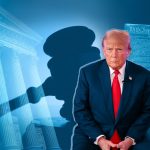Jamie Dimon, the boss of JP Morgan, has played down the risk of a spiralling banking crisis after America’s biggest bank stepped in to buy most of collapsed lender First Republic in a $10.6bn (£8.5bn) takeover hurriedly brokered by US regulators.
After weekend talks to secure a sale of First Republic, the third US lender to fail this year, the Federal Deposit Insurance Corporation (FDIC) confirmed JP Morgan as the buyer.
The regulator is providing $50bn of financing and promising to share loan losses, as part of a deal that further cements JP Morgan’s position as the largest lender in the US.
First Republic’s failure is the second largest in US banking history, beaten only by the 2008 demise of Washington Mutual – which was also seized by the FDIC and sold to JP Morgan.
Speaking on a conference call, Dimon played down any other similarities with the 2008 crash, which triggered the start of an international financial crisis that plunged the global economy into recession.
He said the US banking system was “extraordinarily sound”, adding that the takeover meant the sector was “getting near the end” of the spate of bank collapses and would “hopefully help stabilise everything”.
The failure of First Republic follows that of Silicon Valley Bank (SVB) and Signature Bank. The sequence has prompted concerns about a repeat of the contagion that characterised the global banking crisis.
Dimon said conditions were “nothing like 2008 and 2009 for a lot of different reasons”. However, he conceded that if the US economy went into recession and high interest rates persisted, that could lead to “other cracks in the system”.
Under the terms of the First Republic deal, JP Morgan will acquire all of the California-based bank’s deposits and “substantially all of the assets”, winning out over as many as five rivals reportedly in the running.
Dimon said: “Our government invited us and others to step up, and we did. This acquisition modestly benefits our company overall, it is accretive to shareholders, it helps further advance our wealth strategy, and it is complementary to our existing franchise.”
First Republic, which focused on high-net-worth clients, got into financial difficulty after customers began pulling deposits from any US lender perceived as weak, after the SVB collapse.
Growing anxiety about the health of the US banking sector has forced the Federal Reserve to launch emergency measures to stabilise the markets.
A group of 11 Wall Street banks had pumped $30bn into First Republic last month in an attempt to avoid the third bank failure of 2023. However, shares in the San Francisco-based bank fell by more than 75% last week after it revealed customers had withdrawn $100bn of deposits in March.
The FDIC engineered a sale that involves the regulator agreeing to shoulder 80% of losses on residential mortgages for seven years and 80% of losses on commercial loans for five years, as well as providing $50bn in financing. JP Morgan will pay $10.6bn to the FDIC.
The bank will take on $173bn of loans, $30bn of securities and $92bn in deposits but not First Republic’s corporate debt or preferred stock. JP Morgan said it would recognise a one-off $2.6bn gain and expected a $500m-a-year increase in net income, but added that it also put restructuring costs related to the acquisition at $2.6bn.
Chris Marinac, the director of research at financial services firm Janney Montgomery Scott, said JP Morgan was effectively getting First Republic’s clients for free.
“The loss-share agreement with the FDIC removes the risk to [JP Morgan], so it truly does capture the upside of the underlying business and customers of First Republic,” he added.
Speaking during a conference call, Dimon bristled at any suggestion that JP Morgan was becoming too big as a result of the deal. “We need large successful banks in the largest and most prosperous economy in the world,” he said, adding that anyone who disagreed could “call me directly”.
After the previous two banking collapses of 2023, the Federal Reserve admitted in a report it had been slow to consider the strain on US banks from a steep rise in interest rates, which has lowered the value of banks’ financial assets even though it has increased their profitability.
The result was panic and a flight of funds away from smaller lenders and towards large financial institutions seen as safe havens.
US central bank officials have also blamed changes made during the presidency of Donald Trump that have watered down the oversight of mid-sized banks such as SVB and First Republic.

